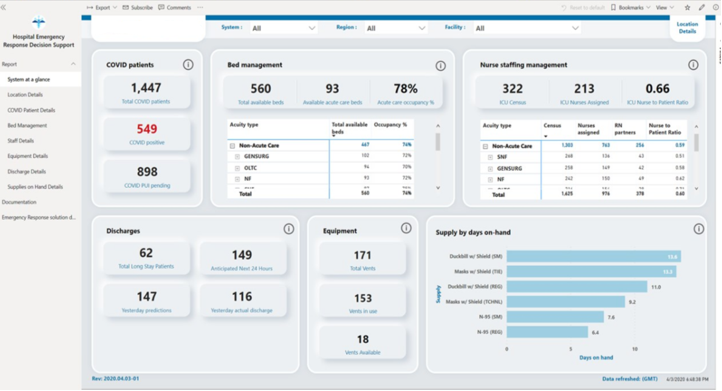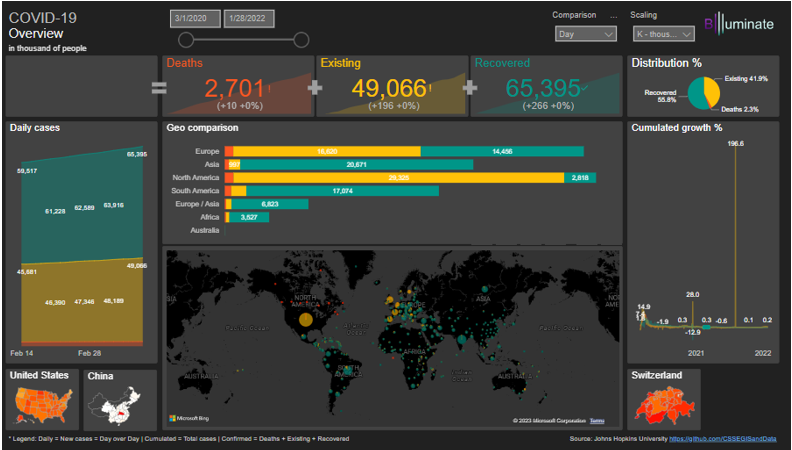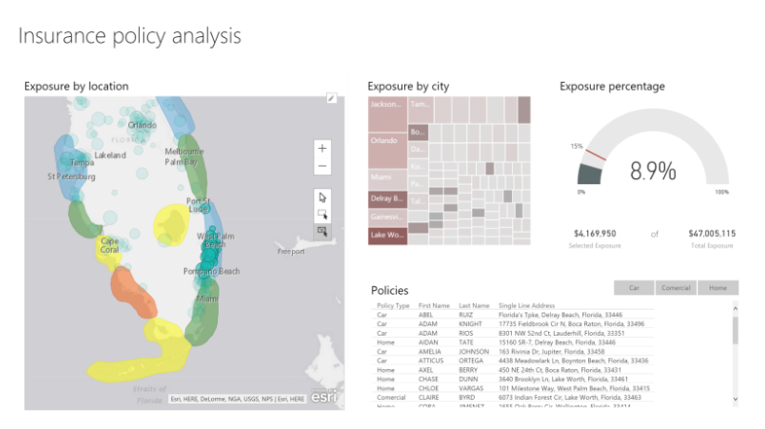Leveraging Power BI for Enhanced Healthcare Data Visualization and Integration
Introduction
The healthcare industry generates an enormous amount of data daily, encompassing patient records, clinical outcomes, financial information, and more. In this era of data-driven decision-making, effectively harnessing and visualizing this data is essential for healthcare providers and administrators. Microsoft Power BI, a powerful business intelligence tool, offers an optimal solution for healthcare organizations seeking to streamline their data reporting and analysis processes. This blog will delve into the benefits of using Power BI for creating reports in the domain of healthcare, with a particular focus on data visualization and ease of integration.
Data Visualization in Healthcare Reports
1.1 Interactive Dashboards
Power BI enables the creation of interactive and visually appealing dashboards that consolidate relevant healthcare data in real-time. With drag-and-drop functionality and an extensive library of customizable visualizations, healthcare professionals can present complex data in a simple and intuitive manner. Interactive elements like slicers and filters allow users to dynamically explore data, providing valuable insights into patient demographics, disease trends, and hospital performance.

1.2 Real-time Analytics
Healthcare data is often time-sensitive and can rapidly change, making real-time analytics a necessity. Power BI offers seamless integration with various data sources, such as electronic health records (EHR) systems, IoT devices, and financial databases. With real-time data streaming, healthcare professionals can monitor patient conditions, track disease outbreaks, and identify operational inefficiencies promptly, enabling proactive decision-making.

1.3 Geospatial Visualizations
Power BI’s geospatial capabilities are particularly valuable in the healthcare domain. By leveraging geographical data, providers can visualize disease outbreaks, identify high-risk areas, and optimize resource allocation. Geospatial visualizations help public health agencies, hospitals, and policymakers make data-driven decisions to control the spread of diseases and enhance healthcare services in specific regions.

Ease of Integration in Healthcare Systems
2.1 Seamless Data Integration
Healthcare organizations deal with multiple data sources and systems, making data integration a critical challenge. Power BI offers native connectors and integration with popular healthcare platforms, such as EHR systems, customer relationship management (CRM) tools, and billing systems. With a few clicks, data from disparate sources can be aggregated, transformed, and analyzed within a single Power BI report, eliminating the need for manual data consolidation, and reducing the risk of errors.
2.2 Security and Compliance
Healthcare data is highly sensitive, and strict security and compliance measures must be in place to protect patient privacy. Power BI adheres to industry-leading security standards, including data encryption, access controls, and compliance certifications like HIPAA (Health Insurance Portability and Accountability Act). This ensures that healthcare organizations can confidently store, process, and share data securely while adhering to regulatory requirements.
2.3 Scalability for Growing Data Needs
As healthcare organizations expand and collect more data, their reporting and analytics tools must accommodate increasing data volumes. Power BI’s cloud-based architecture provides the necessary scalability to handle large datasets without compromising performance. By leveraging Microsoft’s Azure cloud services, healthcare organizations can handle data growth seamlessly and enjoy uninterrupted access to real-time insights.
Use Cases in Healthcare Data Visualization
3.1 Patient Outcomes and Treatment Effectiveness
Healthcare providers can leverage Power BI to monitor patient outcomes and treatment effectiveness over time. By analyzing data from EHRs and patient feedback, healthcare professionals can identify patterns and trends related to specific treatments and interventions, helping them make informed decisions about patient care.
3.2 Resource Optimization
Hospitals and clinics can optimize resource allocation using Power BI’s data visualization capabilities. By analyzing patient flow, bed occupancy, and staff productivity, administrators can identify bottlenecks and allocate resources effectively to provide quality patient care and streamline operations.
3.3 Disease Surveillance and Prevention
Power BI’s geospatial visualizations can be used by public health agencies to monitor disease outbreaks, track vaccination campaigns, and identify potential high-risk areas. This data-driven approach to disease surveillance can help in proactively containing outbreaks and preventing their spread.
Conclusion
In conclusion, Power BI is a game-changer in the healthcare industry, offering comprehensive data visualization and seamless integration capabilities. With its user-friendly interface and interactive dashboards, healthcare professionals can gain valuable insights from complex data sets, leading to better patient outcomes and optimized operational efficiency. By harnessing the power of Power BI, healthcare organizations can transform their data into actionable intelligence, paving the way for improved healthcare services and informed decision-making.
References:
Contact Us
Let us innovate together. If you are interested in exploring this further contact us at https://cloudastra.ai/contact-us
